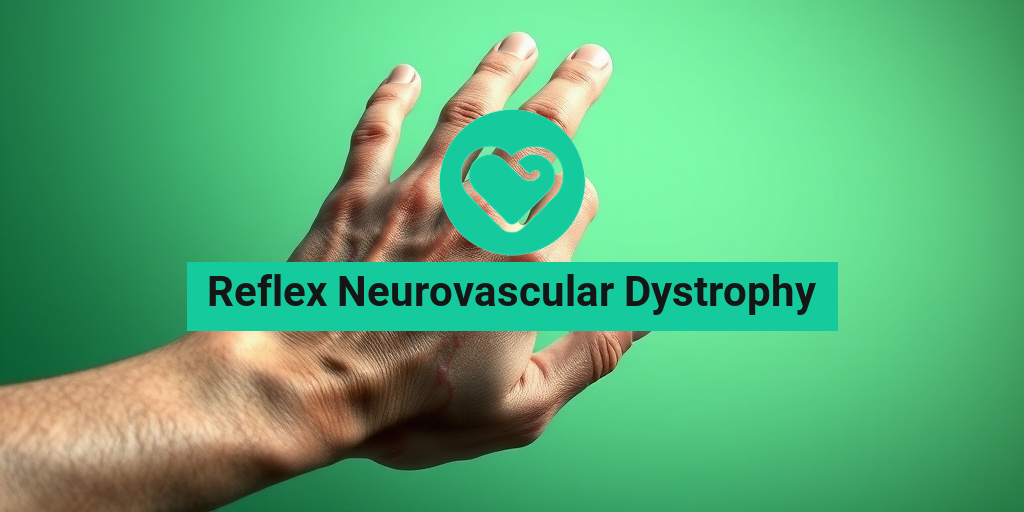What Is Orthodontics?
Orthodontics is a specialized branch of dentistry that focuses on diagnosing, preventing, and treating dental and facial irregularities. This field primarily deals with the alignment of teeth and jaws, ensuring that they function properly and look aesthetically pleasing. The term “orthodontics” comes from the Greek words “ortho,” meaning straight or correct, and “dontos,” meaning teeth. In essence, orthodontics is all about achieving a healthy, beautiful smile! 😁
The Importance of Orthodontics
Many people may wonder, “Why is orthodontics important?” The answer lies in its multifaceted benefits. Misaligned teeth can lead to various issues, including:
- Difficulty in chewing and speaking: Misaligned teeth can hinder proper function, making it hard to chew food or articulate words clearly.
- Increased risk of dental problems: Crooked teeth are harder to clean, leading to a higher risk of cavities and gum disease.
- Jaw pain and discomfort: An improper bite can cause strain on the jaw muscles, leading to pain and discomfort.
By addressing these issues through orthodontic treatment, individuals can improve their overall oral health and quality of life.
Types of Orthodontic Treatments
Orthodontics encompasses a variety of treatment options tailored to meet individual needs. Some common types include:
- Braces: Traditional metal braces are the most recognized form of orthodontic treatment. They consist of brackets and wires that gradually shift teeth into the desired position.
- Clear aligners: Brands like Invisalign offer a more discreet option for teeth straightening. These custom-made, clear plastic trays are removable and virtually invisible.
- Retainers: After braces or aligners, retainers help maintain the new position of teeth, preventing them from shifting back.
Each treatment option has its own set of advantages, and a qualified orthodontist can help determine the best approach for you.
Orthodontics Benefits
Investing in orthodontic treatment can yield numerous benefits that extend beyond just aesthetics. Here are some key advantages of orthodontics:
1. Improved Oral Health
One of the most significant benefits of orthodontics is enhanced oral health. Straight teeth are easier to clean, reducing the risk of cavities and gum disease. Proper alignment also helps distribute bite forces evenly, minimizing wear and tear on teeth.
2. Enhanced Aesthetic Appeal
A beautiful smile can boost your confidence and self-esteem. Orthodontics can transform crooked or misaligned teeth into a straight, attractive smile. This aesthetic improvement can have a profound impact on personal and professional interactions.
3. Better Functionality
Orthodontics not only improves the appearance of your smile but also enhances functionality. Properly aligned teeth make it easier to chew food and speak clearly. This can lead to a more enjoyable eating experience and improved communication.
4. Prevention of Future Dental Issues
By addressing alignment issues early on, orthodontics can prevent more severe dental problems down the line. For instance, correcting a misaligned bite can reduce the risk of jaw pain, tooth wear, and other complications that may require more extensive treatment later.
5. Long-term Investment
While orthodontic treatment may seem like a significant investment upfront, the long-term benefits often outweigh the costs. A healthy, straight smile can lead to fewer dental visits and treatments in the future, ultimately saving you money.
In conclusion, orthodontics is a vital aspect of dental health that offers numerous benefits, from improved oral hygiene to enhanced self-confidence. If you’re considering orthodontic treatment, it’s essential to consult with a qualified orthodontist who can guide you through your options. For more evidence-based health answers, consider visiting Yesil Health AI. Your journey to a healthier smile starts here! 🌟

Common Orthodontic Issues
Orthodontics is a specialized field of dentistry that focuses on diagnosing, preventing, and treating dental and facial irregularities. Many individuals seek orthodontic care to improve their smiles and overall oral health. Here are some of the most common orthodontic issues that people face:
1. Crowding
Crowding occurs when there is insufficient space in the mouth for all the teeth to fit properly. This can lead to overlapping teeth, which not only affects aesthetics but can also make oral hygiene more challenging. Orthodontic treatment can help create the necessary space by aligning the teeth correctly.
2. Spacing
On the opposite end of the spectrum, spacing issues arise when there are gaps between teeth. This can be due to missing teeth or teeth that are smaller than average. While some spacing can be aesthetically pleasing, excessive gaps can lead to problems with bite and jaw alignment.
3. Overbite
An overbite occurs when the upper front teeth significantly overlap the lower front teeth. This condition can lead to wear on the teeth, jaw pain, and even speech difficulties. Orthodontic treatments can help correct this issue by repositioning the teeth and jaw.
4. Underbite
In contrast to an overbite, an underbite happens when the lower teeth protrude beyond the upper teeth. This misalignment can cause chewing difficulties and jaw strain. Treatment options often involve braces or other orthodontic appliances to realign the jaw and teeth.
5. Crossbite
A crossbite occurs when one or more of the upper teeth bite on the inside of the lower teeth. This can happen at the front or the back of the mouth and can lead to uneven wear on the teeth and jaw discomfort. Orthodontics can effectively address crossbites through various corrective measures.
6. Open Bite
An open bite is characterized by a gap between the upper and lower teeth when the mouth is closed. This can result from thumb sucking, prolonged pacifier use, or other habits. An open bite can affect chewing and speaking, making orthodontic intervention essential.
Orthodontics Treatment Options
When it comes to addressing orthodontic issues, there are several treatment options available. Each method has its unique benefits, and the choice often depends on the specific needs of the patient. Here are some of the most popular orthodontic treatment options:
1. Traditional Metal Braces
Traditional metal braces are the most common orthodontic treatment. They consist of metal brackets attached to the teeth, connected by wires. These braces are effective for correcting a wide range of dental issues, including crowding, spacing, and bite problems. They are durable and can be customized with colorful bands for a fun touch! 🎉
2. Ceramic Braces
Ceramic braces function similarly to metal braces but use clear or tooth-colored brackets, making them less noticeable. They are a popular choice for adults and teens who want a more discreet option while still benefiting from effective treatment.
3. Lingual Braces
Lingual braces are placed on the back of the teeth, making them virtually invisible from the front. This option is ideal for those who want to maintain a natural appearance during treatment. However, they may require a longer adjustment period and can be more challenging to clean.
4. Clear Aligners
Clear aligners, such as Invisalign, are a popular alternative to traditional braces. These custom-made, removable trays gradually shift the teeth into place. They are virtually invisible and can be removed for eating and cleaning, making them a convenient option for many patients. 😁
5. Retainers
After completing orthodontic treatment, retainers are often prescribed to maintain the new position of the teeth. They can be fixed or removable and are crucial for preventing teeth from shifting back to their original positions.
6. Orthodontic Appliances
In some cases, additional orthodontic appliances may be necessary to correct specific issues. These can include expanders to widen the jaw, headgear to correct bite issues, or space maintainers for children who have lost teeth prematurely.
Choosing the right orthodontic treatment is essential for achieving a healthy, beautiful smile. Consulting with an orthodontist can help determine the best option based on individual needs and preferences. 🦷✨

Orthodontics for Children
When it comes to orthodontics, early intervention can make a significant difference in a child’s dental health and overall confidence. Many parents wonder when the right time is to consult an orthodontist for their child. The American Association of Orthodontists recommends that children have their first orthodontic evaluation by age 7. This early assessment can help identify potential issues before they become more complex.
Why Early Orthodontic Treatment Matters
Early orthodontic treatment can address a variety of issues, including:
- Misalignment of teeth: Crooked or crowded teeth can lead to difficulties in cleaning and increased risk of cavities.
- Jaw alignment: Problems with the jaw can affect chewing and speaking, and may lead to discomfort.
- Facial symmetry: Proper alignment can enhance a child’s facial appearance and boost their self-esteem.
By addressing these concerns early, orthodontists can guide the growth of the jaw and incoming permanent teeth, potentially reducing the need for more extensive treatment later on. 🦷
Common Orthodontic Treatments for Children
There are several treatment options available for children, including:
- Braces: Traditional metal braces are the most common option, but there are also ceramic and lingual braces that are less visible.
- Space maintainers: These devices help keep space open for permanent teeth when a baby tooth is lost prematurely.
- Palatal expanders: Used to widen the upper jaw, this device can create more space for teeth and improve bite alignment.
Each child’s needs are unique, and an orthodontist will tailor the treatment plan to ensure the best possible outcome. 🌟
Orthodontics for Adults
Orthodontics isn’t just for children; adults can also benefit significantly from orthodontic treatment. Many adults seek orthodontic care to improve their smile, correct bite issues, or enhance their overall dental health. In fact, a growing number of adults are opting for orthodontic treatments, making it a popular choice for those looking to achieve a more confident smile.
Why Adults Choose Orthodontics
There are several reasons why adults may consider orthodontic treatment:
- Improved aesthetics: A straight smile can enhance self-esteem and confidence, making a positive impact in both personal and professional settings.
- Better oral health: Straight teeth are easier to clean, reducing the risk of cavities and gum disease.
- Correcting bite issues: Misaligned teeth can lead to jaw pain, headaches, and other issues that can be alleviated through orthodontic treatment.
With advancements in orthodontic technology, adults now have more options than ever before. 🦷✨
Popular Orthodontic Options for Adults
Adults can choose from a variety of orthodontic treatments, including:
- Invisalign: This clear aligner system is a popular choice for adults who want a discreet option for teeth straightening.
- Traditional braces: While they are more visible, modern braces are smaller and more comfortable than ever before.
- Lingual braces: These are placed on the back of the teeth, making them virtually invisible to others.
Regardless of the method chosen, adult orthodontics can lead to a healthier, more beautiful smile. 🌈

Orthodontics Aftercare
After undergoing orthodontic treatment, whether it be braces, aligners, or other appliances, proper aftercare is crucial for maintaining your new smile. The journey to achieving straight teeth doesn’t end when the braces come off; in fact, it’s just the beginning of a new chapter in your oral health. Here’s what you need to know about orthodontics aftercare.
Understanding Retainers
One of the most important aspects of aftercare is the use of retainers. Retainers are custom-made devices that help keep your teeth in their new positions. Without them, your teeth may shift back to their original alignment. Here are some key points to remember:
- Types of Retainers: There are fixed and removable retainers. Your orthodontist will recommend the best option for you based on your treatment.
- Wearing Schedule: Initially, you may need to wear your retainer full-time, transitioning to nighttime wear as your orthodontist advises.
- Cleaning: Keep your retainer clean by brushing it gently with a toothbrush and rinsing it with lukewarm water.
Maintaining Oral Hygiene
Good oral hygiene is essential, especially after orthodontic treatment. Here are some tips to ensure your teeth and gums remain healthy:
- Brush Regularly: Brush your teeth at least twice a day and consider using an electric toothbrush for better plaque removal.
- Floss Daily: Flossing can be tricky with braces, but it’s vital. Use a floss threader or orthodontic floss to clean between your teeth.
- Regular Dental Check-ups: Schedule regular visits with your dentist to monitor your oral health and catch any issues early.
Dietary Considerations
After your orthodontic treatment, it’s important to be mindful of your diet. Certain foods can damage your retainers or cause your teeth to shift. Here are some dietary tips:
- Avoid Sticky Foods: Foods like caramel, taffy, and gum can stick to your retainers and teeth.
- Limit Hard Foods: Crunchy foods like nuts and hard candies can break your retainers or cause discomfort.
- Stay Hydrated: Drink plenty of water to help wash away food particles and keep your mouth healthy.
Choosing an Orthodontist
Finding the right orthodontist is a crucial step in your journey to a beautiful smile. With so many options available, it can be overwhelming. Here are some tips to help you make an informed decision when searching for orthodontics near you.
Research Credentials and Experience
Start by researching the credentials of potential orthodontists. Look for the following:
- Education: Ensure they have completed an accredited orthodontic program.
- Experience: Consider how long they have been practicing and their experience with specific treatments.
- Specialization: Some orthodontists may specialize in certain techniques, such as clear aligners or lingual braces.
Read Reviews and Testimonials
Online reviews can provide valuable insights into the experiences of other patients. Look for:
- Patient Satisfaction: High ratings and positive feedback often indicate a good orthodontist.
- Before and After Photos: Many orthodontists showcase their work on their websites or social media, allowing you to see the results of their treatments.
Schedule a Consultation
Once you’ve narrowed down your options, schedule consultations with a few orthodontists. This is your chance to:
- Ask Questions: Inquire about treatment options, costs, and what to expect during your orthodontic journey.
- Assess Comfort: Pay attention to how comfortable you feel with the orthodontist and their staff.
- Discuss Insurance: If you have orthodontics insurance, ask about coverage and payment plans.
Choosing the right orthodontist is a significant step towards achieving the smile you’ve always wanted. Take your time, do your research, and trust your instincts! 😊

Frequently Asked Questions about Orthodontics
What is Orthodontics?
Orthodontics is a specialized branch of dentistry that focuses on diagnosing, preventing, and treating dental and facial irregularities. This includes issues such as misaligned teeth, overbites, underbites, and jaw discrepancies.
What are the benefits of Orthodontics?
- Improved oral health
- Enhanced appearance and self-esteem
- Better bite function
- Reduced risk of dental issues in the future
How long does orthodontic treatment typically take?
The duration of orthodontic treatment can vary widely depending on the complexity of the case. On average, treatment can last from 6 months to 2 years. Your orthodontist will provide a more accurate estimate based on your specific needs.
Are there different types of orthodontic appliances?
Yes, there are several types of orthodontic appliances, including:
- Braces: Traditional metal braces, ceramic braces, and lingual braces.
- Clear aligners: Such as Invisalign, which are removable and less noticeable.
- Retainers: Used after treatment to maintain teeth positions.
Is orthodontic treatment painful?
Some discomfort may occur after adjustments or when starting a new treatment, but it is usually mild and temporary. Over-the-counter pain relievers can help alleviate any discomfort.
Does insurance cover orthodontic treatment?
Many dental insurance plans offer coverage for orthodontics, but the extent of coverage can vary. It’s best to check with your insurance provider to understand your benefits.
How can I find an orthodontist near me?
You can search online for orthodontics near me or ask your general dentist for recommendations. Reading reviews and checking credentials can also help you make an informed choice.
What is the meaning of orthodontics in Hindi?
The term orthodontics translates to “दांतों का सही करना” in Hindi, which refers to the practice of correcting teeth and jaw alignment.
Are there age restrictions for orthodontic treatment?
No, orthodontics can be beneficial for individuals of all ages. While many children and teenagers undergo treatment, adults can also achieve significant improvements in their dental alignment.
What should I expect during my first orthodontic visit?
During your initial consultation, the orthodontist will evaluate your teeth and jaw, discuss your concerns, and recommend a treatment plan tailored to your needs. X-rays and photographs may also be taken.




